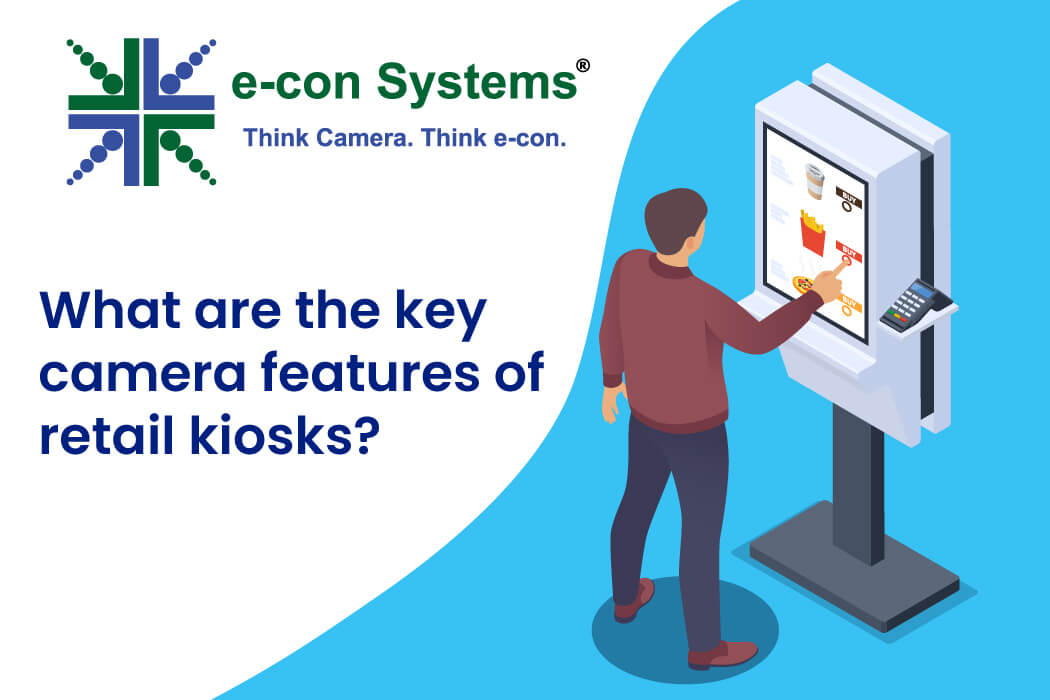Different types of retail kiosks, such as self-service, self-ordering, self-checkout, and interactive kiosks, leverage cameras uniquely to optimize their operations. These cameras are used for critical processes, such as barcode and QR code reading, product recognition, customer identification, and security monitoring.
The selection of cameras for these kiosks is determined by their applications, usage environments, and placement—whether indoors or outdoors. After all, each kiosk type demands specific camera features, such as high dynamic range, high resolution, and high frame rate.
In this blog, let’s look at the different types of retail kiosks, how they use cameras, and the must-have features that determine the success of these modern applications.
Types of Camera-Based Retail Kiosks
Self-service kiosks
Self-service kiosks provide a convenient way for users to complete tasks independently. By integrating the right camera, they ensure security while streamlining key processes like verification. These kiosks include:
- Ticketing kiosks
- Financial kiosks (Retail ATMs)
- DMV kiosks for license renewal
Ticketing kiosks integrate cameras for facial recognition, which helps verify pre-registered ticket data and confirm individuals’ identities. This reduces ticket fraud and ensures a smooth user experience. Financial kiosks, like retail ATMs, incorporate camera solutions for biometric verification, capturing images during transactions to stop fraud by only allowing authorized users to access financial services.
There are also DMV kiosks, which need to capture images for identity verification and license photo updates, making the renewal process faster and more secure.
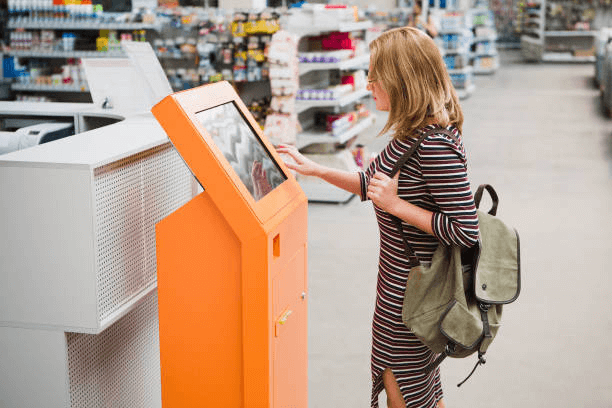 Self-ordering kiosks
Self-ordering kiosks
Self-ordering kiosks are increasingly popular in various retail environments, including vending machines, SIM card dispensers, and food and beverage outlets. They let customers place orders and complete transactions, enhancing convenience and reducing the need for cashier interaction. Some of the popular self-ordering kiosk types are:
- Smart and reverse vending machines
- SIM dispensing kiosks
- Food and beverage kiosks
Smart vending machines and reverse vending machines use cameras to monitor product dispensing and verify returned items. It ensures accurate transactions and compliance with recycling requirements. SIM dispensing kiosks need imaging power to verify identities by capturing user images for secure distribution of SIM cards.
Food and beverage kiosks also leverage camera solutions to verify the age of customers purchasing age-restricted products, as well as to monitor the ordering process for accurate transactions.
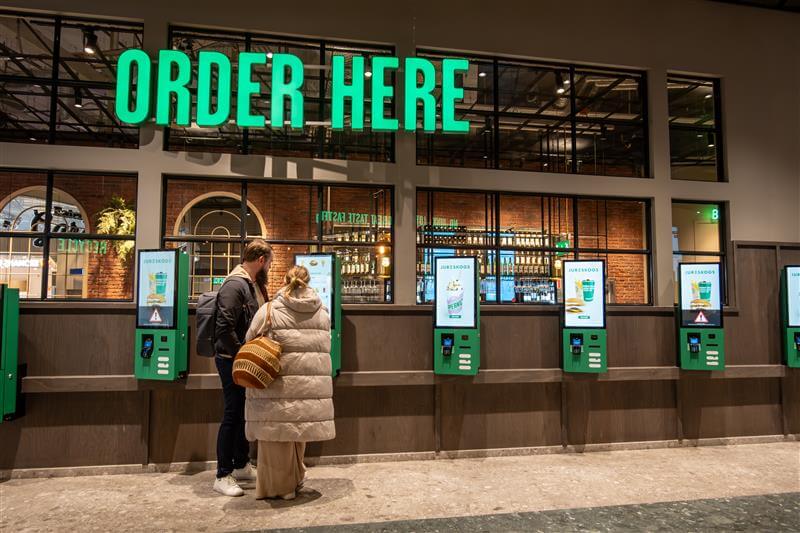 Interactive kiosks
Interactive kiosks
Interactive kiosks use smart AI cameras to provide engaging and intuitive user experiences. They are found in retail settings, offering services such as virtual try-ons and interactive gaming. It’s important to select the best-fit camera solution since it helps capture user interactions while enabling real-time adjustments based on movements and gestures. These kiosks include:
- Virtual try-on kiosks
- Gaming kiosks
Virtual try-on kiosks in clothing stores use cameras to capture the user’s image and overlay selected garments. So, customers can see how clothes would look without physically trying them on. Gaming kiosks, equipped with advanced camera solutions, track players’ gestures and movements. It helps create immersive gaming environments for users.
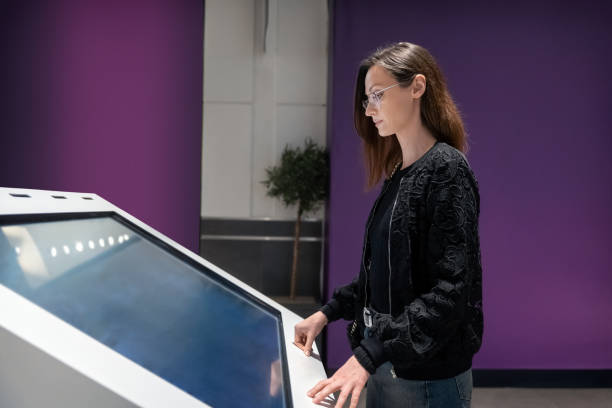 Self-checkout kiosks
Self-checkout kiosks
Self-checkout kiosks enable customers to scan, bag, and pay for their purchases independently. These kiosks typically feature a touchscreen interface for item selection, barcode scanners, and payment systems. As you can imagine, cameras play a crucial role in enhancing the functionality of self-checkout kiosks.
For instance, they are needed for scanning barcodes, weighing items, and verifying age-restricted products. It makes sure that customers are charged correctly for their purchases and prevent theft. Cameras can also analyze facial features to confirm the age of customers buying restricted items, ensuring compliance with legal requirements.
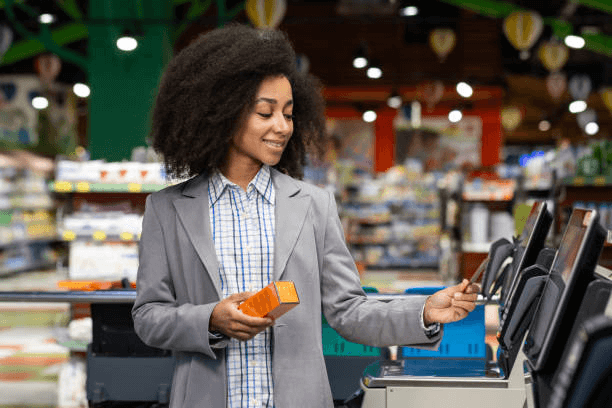 Key Camera Features of Retail Kiosks
Key Camera Features of Retail Kiosks
High Dynamic Range (HDR)
High Dynamic Range feature allows retail kiosk cameras to capture images with a range of luminance. Hence, both the darkest and brightest parts of an image are visible without loss of detail. This process reduces noise and prevents overexposure or underexposure, resulting in superior image quality.
In scenarios with changing lighting conditions, such as retail spaces with bright displays and shaded areas, HDR enables the camera to capture clear images, which can be useful for capturing facial features, product details, barcode information, etc.
High image resolution and frame rate
High-resolution retail kiosk cameras can gather fine details for accurate image analysis, such as facial recognition, product identification, and age verification. For instance, in self-checkout kiosks, high-resolution imaging ensures that barcodes and product labels are accurately scanned.
The combination of high resolution with a high frame rate enables seamless imaging, even in fast-moving scenarios. A high frame rate, measured in frames per second (fps), helps cameras capture rapid movements without motion blur. It can be very critical when users interact quickly with the kiosk, such as waving a hand in front of a sensor or rapidly scanning multiple items.
Focus type and Depth-Of-Field
The focus type and Depth-Of-Field (DoF) impact the ability of retail kiosk cameras to get the right detail at the right time. That’s why autofocus cameras automatically adjust to ensure that subjects at varying distances are in sharp focus. Fixed-focus cameras, on the other hand, are pre-set to a specific focus range, which is helpful when the distance between the subject and the camera is consistent.
Depth-of-field, the range within which objects appear acceptably sharp, is also a major selection criterion. A shallow DoF allows for background blurring, which can help isolate the subject, such as a customer’s face, for facial recognition. A deep DoF, however, ensures that a broader range of distances remains in focus, which is beneficial when both near and far objects need to be clearly captured. Optimizing the focus type and depth of field is based on the specific application.
UVC-compliant
UVC (USB Video Class)-compliant cameras adhere to standardized protocols for video transmission over USB (plug-and-play functionality). It eliminates the need for additional drivers or complex software installations while simplifying the deployment process. The standardization provided by UVC compliance also delivers consistent performance across different platforms and operating systems.
Furthermore, UVC-compliant cameras support a wide range of resolutions and frame rates, offering the flexibility to adapt to various kiosk requirements.
Customization for mechanical integration
With customization, retail kiosk cameras can fit unique kiosk designs and configurations. It includes adjustments to the camera’s physical dimensions, mounting options, and connector types. Custom-built camera housings can also protect from dust, moisture, and vandalism, enhancing durability in high-traffic retail environments.
Also, customization can extend to the internal components of the camera, such as lens selection, sensor type, and additional features like infrared illumination for low-light conditions.
e-con Systems’ Cameras for Retail Kiosks
e-con Systems has 20+ years of experience in designing, developing, and manufacturing OEM cameras. We have a proven track record of offering UVC-compliant USB cameras that enhance the retail kiosks of clients. Also, as pioneers in manufacturing USB 3.0 UVC cameras, e-con Systems ensures that our cameras come with the right capabilities, including compact form factor, auto-focus features, wide platform compatibility, and more.
See how we built a vision-powered fuel dispenser kiosk system.
Explore our expertise in integrating cameras into retail kiosks.
Use our Camera Selector Page to go through our entire portfolio.
If you need help integrating world-class cameras into your retail kiosks, please write to camerasolutions@e-consystems.com.

Ranjith is a camera solution architect with over 16 years of experience in embedded product development, electronics design, and product solutioning. In e-con Systems, he has been responsible for building 100+ vision solutions for customers spanning multiple areas within retail including self service kiosks, access control systems, smart checkouts and carts, retail monitoring systems, and much more.




